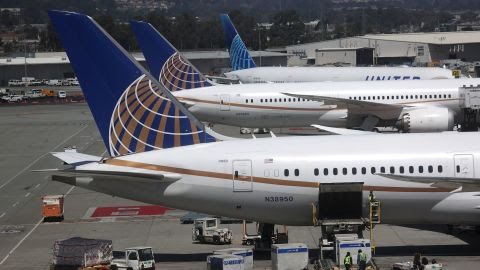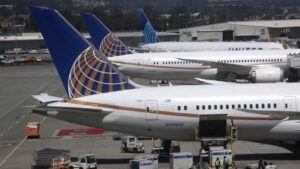
The Federal Aviation Administration has opened an investigation into the jolt on a United Airlines flight that injured two passengers when the pilots responded to an onboard midair collision system warning.
United Airlines says as flight 2428 from  Newark, New Jersey, was descending into San Francisco International Airport last Thursday, it “slowed its descent to account for another aircraft at a lower altitude.” Both injured passengers were taken to the hospital, United said in a statement.
Newark, New Jersey, was descending into San Francisco International Airport last Thursday, it “slowed its descent to account for another aircraft at a lower altitude.” Both injured passengers were taken to the hospital, United said in a statement.
An FAA incident report says one passenger received serious injuries and another minor injuries last Thursday when the pilots responded to a traffic collision avoidance system resolution advisory or “TCAS Collision resolution advisories are treated as extreme warnings of a possible collision with another airplane and pilots are required to act immediately.National Transportation Safety Board has not yet launched an investigation, but a spokesperson told CNN that the agency is gathering preliminary information
Thursday’s in-flight incident is the latest incident involving a possible near-collision this month. On September 12, an Alaska Airlines flight had to abort its takeoff in Nashville due to a Southwest flight crossing the same runway. Two days prior, the wingtip of a Delta Air Lines Airbus A350 hit a smaller regional jet while both planes were taxiing, causing the regional jet’s tail to fall off.Data from FlightRadar24 shows the incident took place at 31,000 feet as the flight was near Lake Berryessa, about 70 miles north of San Francisco. FlightRadar24 says a Southwest Airlines flight was 3,000 feet below the United flight and a SkyWest flight was 1,000 feet below.
In a statement, the FAA – which is responsible for controlling air traffic – said “there was no loss of safe separation.”
Audio from LiveATC.net captured the pilots declaring a medical emergency, telling air traffic controllers in Oakland that “someone might have broken an ankle and there’s passengers that got hurt when we had an RA.”